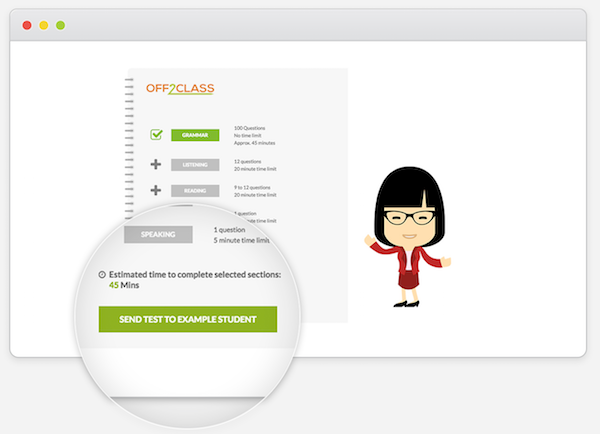7 min read
Share this post

The call to Plan an ESL course will be an easy task for some of us. We can use past courses we’ve planned as a starting point or perhaps use an existing plan and adapt it.
Yet, for many of us, there might not be a previous ‘template’ at our schools to follow. We may be at a new school or be planning for a new course type within an existing school. Even more daunting, we might be planning our own private lessons!
Today’s article is geared to those that have never planned an ESL course before. For teachers that have planned lessons but not courses.
A request to Plan an ESL Course for the first time can be daunting. We’ve all planned individual ESL lessons. But, how do we link one lesson to the next without relying solely on a pre-packaged course book? How do we take into account the needs of a student intake if we’ve never met them before? How do we juggle the need to plan an ESL course with the fact that our first class is tomorrow!
I’d like to outline a method that you can use today to plan your next ESL course. You can adapt this method to any ESL teaching environment. Are you planning an online ESL course or a classroom course? You’ll be able to use this method for both environments. Equally, it also works for both classroom lessons and one-on-one tutorials.
Note: In today’s example, I’m going to plan a course for a single student. Yet, you can adapt this example to a group environment. Get in touch in the comments section below for advice on using this method with your group.
You’ll need some form of a diagnostic so that you can obtain a starting point for understanding your student’s ESL needs. You can, of course, find a host of ESL assessments on the web or even design your own.
My recommendation would be to assign your student our ESL Placement Test. Within a couple of clicks, you’ll have assigned your student a placement test that they are prompted to complete online. You’ll have the choice of including Listening, Reading, Writing and Speaking with the mandatory Grammar assessment.
The following is a short demonstration of assigning our ESL Placement Test
Now that your student has completed their ESL Placement Test it’s time to review the student’s results.
Here’s a snippet of what you’ll receive for every student that sits the placement test:
When reviewing these results there are a couple of items I’d like to point out that will help you interpret a student’s learning profile and needs as you plan an ESL course:
The following is a short demonstration of reviewing your student’s ESL Placement Test results
In Step 2 we produced a list of grammar-focused lessons linked to topics that we know our student is struggling with. How do we know these lessons are relevant to the student’s needs? Because our student displayed the deficiencies when completing the placement test.
Now we need to adjust our student’s learning plan (i.e. our course plan) by adding non-grammar focused lessons to it. There’s only so much grammar that any one student can take. How should you go about adjusting this all-grammar course plan into something that better addresses our student’s needs? This comes down to a number of factors:
You should also use this opportunity to take into account any scheduling parameters such as class frequency, session timing or any assessments that might need to be planned etc…
The following is a short demonstration of customizing your ESL Course Plan
While we plan an ESL course, many of us won’t have the luxury of being in contact with the students we are actually developing the plan for. But once you begin teaching you have the best asset for your course planning of all: access to your students!
Our final step is not actually a discrete point in the course planning process. Here we would simply suggest that you continually monitor how your students are reacting to your chosen lessons and adjust your course plans accordingly. Don’t think of your course plans as a static ‘A to Z’ linear path. As you learn more about your students, their needs, their weaknesses and their goals, you should adjust your plan accordingly.
If you’ve used Off2Class to assign our Placement Test and set up a Learning Plan, then our customization features noted in the demo video in Step #3 can be used to adjust your plans at any time.
Share this post



16 Comments
great!
Thanks for stopping by Lakmini!
I’d like to see you add the ability to add an entire category of lessons, not require adding each lesson individually. For example, by clicking on the Phrasal Verbs heading, ALL of the Phrasal Verb lessons would be added. There are many lessons in some categories, and adding each one individually is tedious.
Cheers Steve, so you’re looking to offer specific courses based on categories? I could see how this would be helpful, let me circle back with the team.
Hi! I think Steve has made a great point. I think this would be very useful. Thanks
Cheers Tino, I’ll put your name up against it as well with the product team.
I am very interesting on your Interface.My question is how to applicate in Mathematic course.
I teaching Mathematic in senior high school.
Hi Charles,
Nice to hear from you. At present, we are sticking to ESL, but if the opportunity ever arises, we would love to add more subjects.
Our IT co-founder, Serdar, built and maintains the Off2Class interface.
Regards,
James
Thanks for the useful, courteous info, James.
Thanks for stopping by Fadi!
Hi guys,
This is a fantastic post. As I’m sure you’re aware, I’ve been a user of Off2Class for some time now but I haven’t made much use of the customisation of lesson plan feature but now you’ve drawn it to my attention again I most certainly will be from now on.
This is what I like about your posts, I nearly always learn something , either new or some feature I’d forgotten about.
Many thanks guys,
James.
HI James, so lovely to hear from you! Yes, we decided to start off 2018 with a number of posts that are both interesting to new teachers that haven’t heard of us before but offer extended insight for teachers like you that have been with us on the journey for a long time,
Happy 2018!
Hi,
The concept of Off2class seems very interesting, but I have a question. It seems that everything is set up for one 2 one teaching. What happens if I have a small group? Is there a way that the course plan can be adapted to the needs of several students?
Hi George,
Nice to hear from you.
Just like a printed course book, you can teach with Off2Class any way you want. We have a number of schools and language institutes using us in group settings, so it’s simply a matter of altering how you teach to fit the learners. In a group setting you may naturally progress through the lessons at a different pace than in a one-2-one setting, but other than that, you should be good to go!
Regards,
James
This website is extremely resourceful and can’t wait to use it. I have some potential learners, However, they haven’t signed up for any lessons is there a possibility you could help me create an introductory lesson on any topic and I would get an idea and would build upon that.
Thanks
Roberta
Hi Roberta welcome! Generally, we’d recommend having your students sit our placement test as your starting point rather than trying to guess what would be an appropriate ‘introductory’ lesson. Would that work for you in this case?